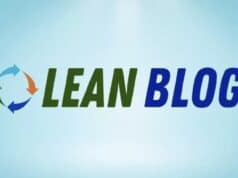WSJ.com – $$ Subscription Required
Front page article today about Chrysler and flexible manufacturing, focused on the retooled plant in Belvidere IL. Here is an earlier posting on their retooled team concept.
The main point of the article is about how the plant previously could only build one model, the Dodge Neon.
Chrysler engineers discovered that the PT Cruiser was an inch too tall to fit through the plant's paint shop. Chrysler, which was losing money at the time, ended up spending $300 million to expand the assembly line at the PT Cruiser plant in Toluca, Mexico.
Meanwhile, Chrysler took another hit at Belvidere: Because Neon sales were slow, it had to cut production there, leaving the Illinois plant's assembly line operating just eight hours a day. The rest of the time, hundreds of millions of dollars in equipment sat idle.
Ouch! Comparing the automakers and their use of flexible plants, Ford and GM are at roughly 50% of volume on flexible lines, Chrysler is higher, Honda is the lowest of the Japanese, then Toyota and then Nissan is the highest.
GM has four plants making small cars for its Chevrolet, Saturn and Pontiac brands, about 410,000 vehicles a year in all. It could conceivably produce that many with a single flexible plant.
Yup, labor cost, that's GM's only problem (the WSJ called GM and Ford “slow” to respond to an industry trend that the Japanese started). Anyway, the “new” Chrysler plant does three different models, which allows them to spread out costs and it's less risky, since if sales of one model are lower, chances are another model will have higher sales to compensate.
The flexibility comes from automation that can change tooling with zero changeover, the equivalent of a person picking up a different hammer.
The robots can quickly exchange one of these devices, or “end effectors,” for another, the way a human being would put down a wrench and pick up a hammer. By switching end effectors, the robots can produce a different car.
The robots are a third less expensive than old-style tooling. And since they aren't designed to build a single vehicle, and discarded when it's dropped, the robots can be expected to stay in use about twice as long, perhaps 10 to 12 years.
Not only are they more flexible, they're cheaper now and in the long run!
With the flexibility, though, came the need to standardize the assembly process across multiple vehicles.
In the past, each plant had its own method, each with inefficiencies. For Belvidere, engineers hammered out a process that will become the template for almost all Chrysler plants. “If you put the doors on at the third step with one model, you have to put the doors on at the same place with the other, too,” Mr. Faga said.
But it's not just automation. I don't think Chrysler is going down the GM “lights out factory” path of Roger Smith in the 1980's. CEO Tom LaSorda is a great lean advocate and the earlier article on the team concept tells me that they are also focused on people.
The engineers found that it's cheaper to have windshields installed by workers than with automated equipment.
So while the reporters (and Wall Street, in general, I guess) are wowed by automation, it sounds like Chrysler is taking a smart, lean approach, of not pushing automation for the sake of automation. I understand that Toyota has more the vehicle welded by hand than other automakers, because people are ultimately more flexible than robots (robots are used for major welding or in areas where it would be unsafe for people).
Last thing that jumped out at me from this article was the discussion of cost and price.
Remember the Toyota/lean model is “Profit = Price – Cost” where the price is set by the market and you increase profits by lowering costs. The old model was Price = Cost + Profit where you felt entitled to tack on the “necessary” profit on top of your costs.
People still have this association of “if we can make it cheaper, we can sell it cheaper” mindset. There's no association between cost and price. Companies charge what the market will bear. Why does a certain designer handbag cost $1200? Because somebody is willing to pay it!
So, anyway, in this article:
Chrysler can use the cost edge it thus gains to be more competitive on price. The base price of its new Jeep Compass, a small sport-utility vehicle, will be $15,985, about $3,000 less than the competing Toyota RAV4. For the Dodge Caliber, a small hatchback that uses some of the same parts as the Compass, the starting price is $13,985. That's about $200 less than the Neon was even though the Caliber is more advanced, offering features such as side airbags and a beverage cooler in the glove compartment.
I wouldn't necessarily brag about the lower prices. That means the market is valuing the newer Caliber lower than the old Neon, probably partly because it's a new unproven model. You could argue that the Toyota RAV4 earns a $3,000 price premium over Jeep Compass because of Toyota's reputation and reliability. If Chrysler had lower costs AND a market price premium, think of how profitable they would be!
It seems like, for now, Chrysler is buying access to the market through cheap prices. Didn't we call that “dumping” when the Japanese were doing that decades ago?
Either way, good luck to the Belvidere plant and to Chrysler.
What do you think? Please scroll down (or click) to post a comment. Or please share the post with your thoughts on LinkedIn – and follow me or connect with me there.
Did you like this post? Make sure you don't miss a post or podcast — Subscribe to get notified about posts via email daily or weekly.
Check out my latest book, The Mistakes That Make Us: Cultivating a Culture of Learning and Innovation:









“When the other fellow sells cheaper, it’s called ‘dumping’. When you do it, its called ‘mass production'”
-Will Rogers